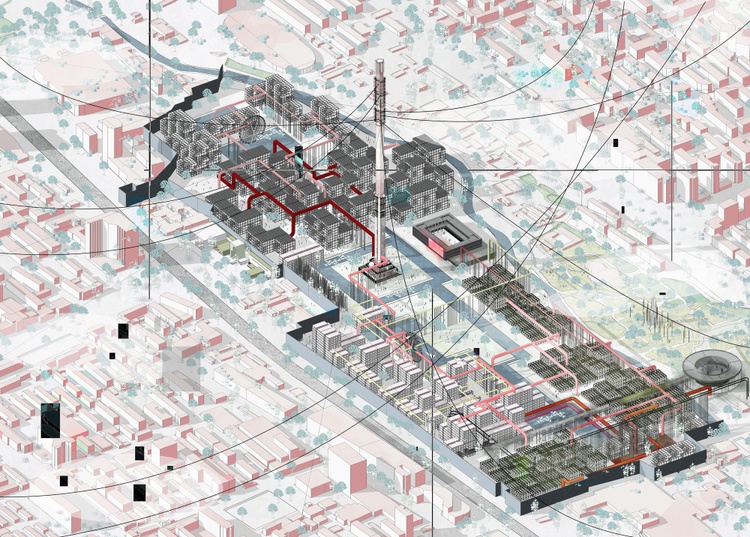Just How CDA Architects Supply Cutting-Edge Solutions for Lasting Style
Just How CDA Architects Supply Cutting-Edge Solutions for Lasting Style
Blog Article
A Thorough Overview of Architectural Designs and Their Influence on Modern City Planning and Growth
Building designs have long functioned as a mirror to the social worths and technical innovations of their time, playing an essential function fit contemporary city planning and advancement. From the splendour of Neoclassicism to the utilitarian method of Brutalism, each style has introduced unique concepts that affect city visual appeals and functionality. As contemporary obstacles emerge, consisting of sustainability and area requirements, understanding these historic structures comes to be important. The resulting dialogue not only educates future layout methods however likewise raises relevant questions regarding the equilibrium in between heritage and development in our evolving urban landscapes.
Historical Summary of Architectural Styles

As societies transitioned with the Middle Ages, Gothic architecture emerged, defined by its verticality and elaborate describing, mirroring the spiritual goals of the era. The Renaissance noted a resurgence of classical perfects, combining art and style in ingenious manner ins which affected succeeding styles throughout Europe.

Today, architectural designs continue to progress, driven by globalization and sustainability concerns, mirroring a dynamic interaction between heritage and technology. This historical summary emphasizes the value of design as a mirror of societal evolution and as a driver for city growth.
Key Architectural Styles Explained
The variety of building designs reflects the myriad influences that shape our developed setting, each personifying distinctive characteristics and social importances. Trick architectural styles include Classic, Gothic, Baroque, Innovation, and Postmodernism, each standing for one-of-a-kind historic contexts and aesthetic ideologies.
Classical architecture, rooted in old Greece and Rome, emphasizes symmetry, proportion, and making use of columns (cda architects). On the other hand, Gothic design, growing in the Center Ages, is identified by sharp arcs, ribbed safes, and flying buttresses, developing a heavenly high quality in basilicas. Baroque design, emerging in the 17th century, is marked by grandeur, elaborate ornamentation, and a dynamic interplay of light and shadow
Modernism, which acquired energy in the early 20th century, focuses on feature over type, making use of brand-new materials like steel and glass to develop minimalist structures. Postmodernism, reacting against the austerity of Innovation, embraces eclecticism and historical reference, frequently incorporating spirited elements and paradox.

Effect On Urban Planning
In forming the growth of cities, building designs significantly influence urban preparation choices. The selection of architectural style usually dictates the looks, capability, and overall character of urban settings.
Furthermore, architectural styles can this post impact zoning policies and land use plans. Urban planners have to consider the dominating building patterns when creating districts, making certain that brand-new growths integrate with existing frameworks. This factor to consider promotes cohesive metropolitan landscapes and enhances community identification.
The execution of details building styles can also influence socioeconomic factors within a city. Premium contemporary designs may attract wealthy citizens and companies, leading to gentrification, while more budget friendly real estate services could prioritize practical and lasting designs to suit diverse populaces. cda architects. Eventually, the interaction between building styles and metropolitan planning develops dynamic cities that mirror both historical context and modern needs, forming the lived experiences of their residents
Sustainability and Modern Style
Architectural designs play a pivotal function in addressing modern challenges, especially in the realm of sustainability. As city areas broaden and ecological issues escalate, contemporary style increasingly welcomes sustainable style concepts that focus on energy effectiveness, source conservation, and very little eco-friendly impact.
Contemporary architectural activities, such as biophilic layout and green design, supporter for structures that harmonize with their environments, making use of natural materials and advertising visit homepage biodiversity. These designs often incorporate eco-friendly power sources, such as solar panels and wind turbines, to minimize dependence on fossil fuels and lower carbon impacts.
Moreover, the assimilation of innovative modern technologies, such as smart building systems, improves power monitoring, maximizing source use while guaranteeing resident comfort. Ingenious water administration approaches, consisting of rain harvesting and greywater recycling, more add to lasting city settings.
Especially, sustainability expands past ecological problems; it incorporates social and financial measurements too. By fostering area health and advertising inclusivity, modern-day building styles align with sustainable growth objectives. The advancement of building techniques continues to shape resilient cities that not just satisfy the requirements of the present yet additionally secure the future for generations to come.
Neighborhood Involvement in Design
Area interaction in design functions as a crucial bridge in between designers and the populations they offer, ensuring that the constructed atmosphere reflects the requirements and goals of its customers. This collective process welcomes community participants to contribute their understandings and preferences, cultivating a sense of possession and obligation towards the areas they inhabit.
Efficient community involvement employs numerous techniques, such as workshops, studies, and public online forums, to collect diverse viewpoints. These methods facilitate a two-way discussion, enabling designers to recognize local contexts while encouraging citizens to voice their worries and desires. This inclusivity not just improves the layout high quality yet likewise advertises social equity by dealing with the distinct difficulties encountered by marginalized groups.
In addition, area interaction can bring about innovative remedies that could not emerge in a standard style process. By incorporating regional expertise and cultural values, architects can develop spaces that resonate even more deeply with users, improving functionality and sustainability. Inevitably, focusing on neighborhood engagement in design processes leads to settings that support social communications, assistance health, and strengthen community ties, thus playing an essential function in forming modern-day city landscapes.
Verdict
Architectural styles have actually exceptionally influenced modern next page city preparation and growth, showing evolving cultural and technical contexts. As cities proceed to grow and adapt, the recurring dialogue in between building heritage and modern layout concepts will continue to be crucial in producing inclusive, vibrant rooms that improve quality of life and advertise social equity.
Report this page